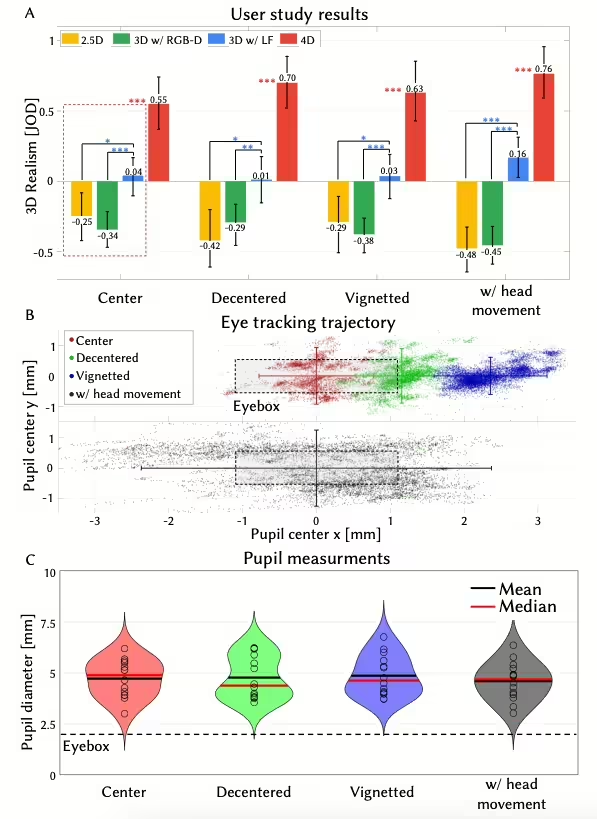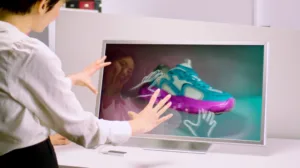Research conducted in collaboration between the Optical Engineering and Quantum Electronics Laboratory at Seoul National University and Stanford University’s Computational Imaging Lab tries to identify key visual perceptual factors that might enhance the experience of viewing 3D displays.
| Target Format | Multiple Points Retinal Blur | View in a Single Ray | View Dependency |
| 2.5D | No | Approximate | Approximate |
| 3D w/ RGB-D | Yes | Approximate | Approximate |
| 3D w/ Light Field | Yes | Correct | Approximate |
| 4D | Yes | Correct | Correct |
Holographic displays, which generate 3D images using coherent light sources and spatial light modulators, require effective methods to represent depth. One of the traditional methods of approaching the problem is the multilayer method. In the multilayer method, a 3D object is broken down into several 2D layers. Each layer corresponds to a specific depth level of the scene. The closer objects are to the viewer, the more forward layers they appear in, while objects farther away are placed in deeper layers. Parallax is the effect where objects at different distances appear to move at different speeds when the viewer moves. The multilayer method can struggle to reproduce this effect accurately, especially in dynamic or interactive settings, which reduces the sense of realism.
The research compared the user experience of 3D images generated through the traditional multilayer method and the light field method, which accurately captures parallax. Light field parallax occurs when a display is able to reproduce these small shifts in perspective by projecting different images to each eye based on the viewer’s position. This makes the image appear three-dimensional and helps create a more immersive experience.

A light field display does this by capturing and recreating the entire light field of a scene, meaning it can show the scene from multiple viewpoints, allowing the user to move their head and still see the image realistically from different angles. Instead of relying on eye-tracking to adjust the image based on the viewer’s position, light field holography inherently provides multiple viewpoints. This means the display can show different parts of the image to each eye and adjust dynamically as the viewer moves their head, without needing to track where the eyes are. As the user shifts their position, the holographic display automatically updates the perspective based on the pre-encoded light rays, making it appear as though the 3D objects are shifting just as they would in the real world. This is because the display is reconstructing the light field from multiple angles in real-time.
Participants compared different types of holographic displays including light field parallax (4D) to simpler formats like 2.5D or standard 3D.. The displays that incorporated light field parallax were rated as more realistic, even in challenging conditions like small movements of the eye or head.
The researchers found that accurate parallax reproduction of the continuous, natural depth cues provided by light field holography make for a better immersive 3D viewing experiencing than other approaches. True holographic depth perception that adapts seamlessly to natural eye movements without relying on tracking is the best way forward.
Reference
Kim, D., Nam, S.-W., Choi, S., Seo, J.-M., Wetzstein, G., & Jeong, Y. (2024). Holographic Parallax Improves 3D Perceptual Realism. ACM Trans. Graph., 43(4), 68:1-68:13. https://doi.org/10.1145/3658168

